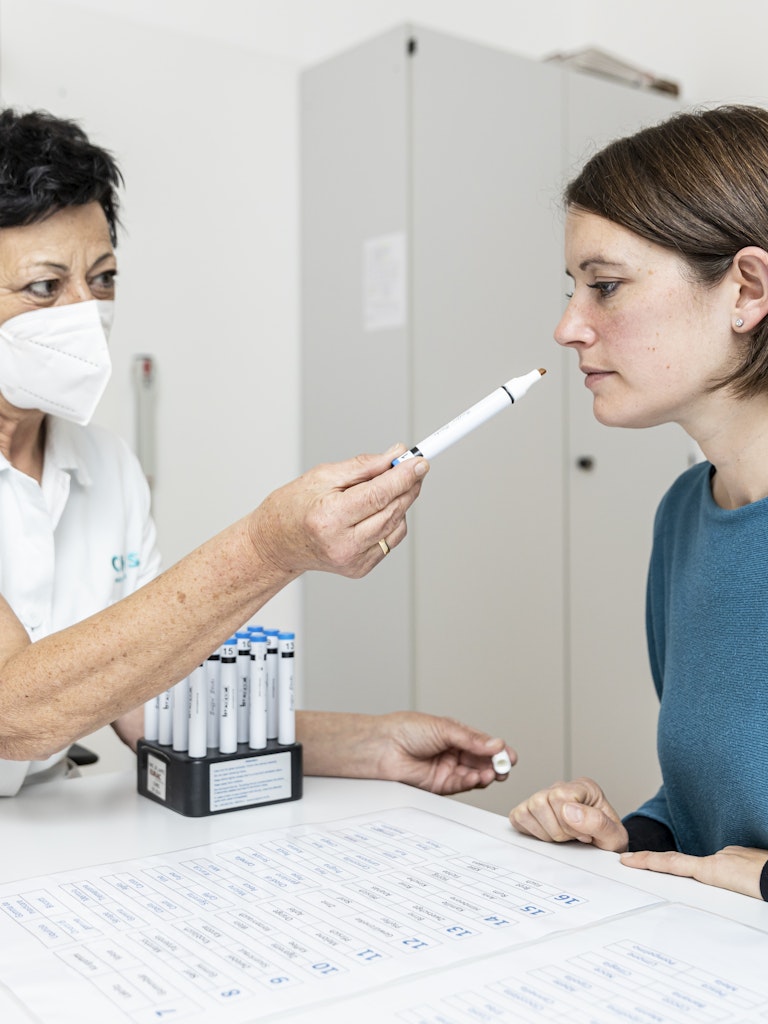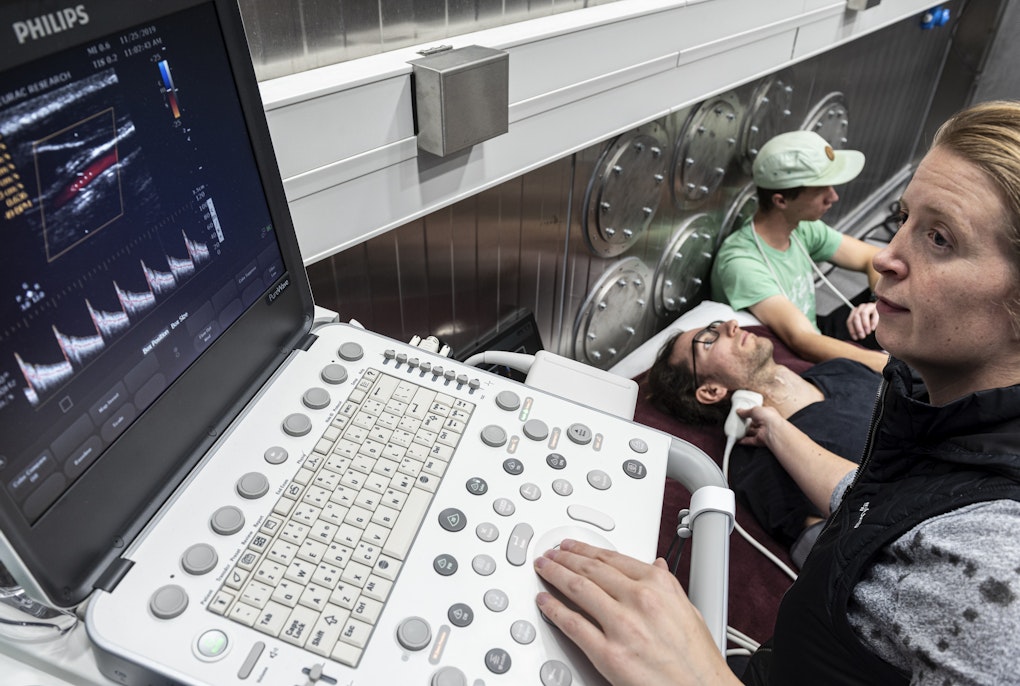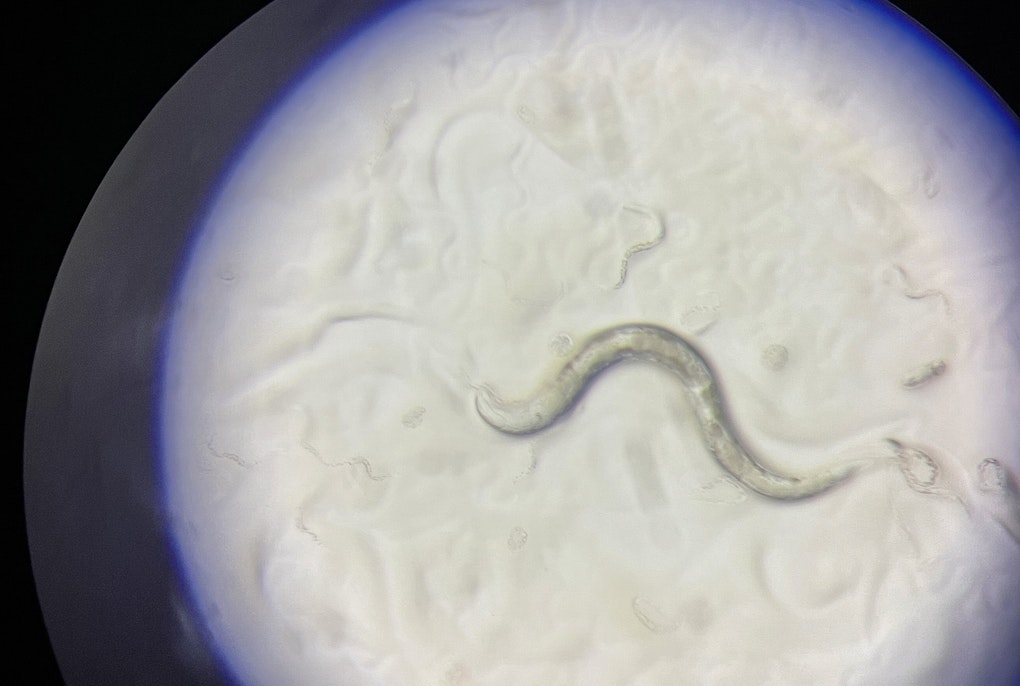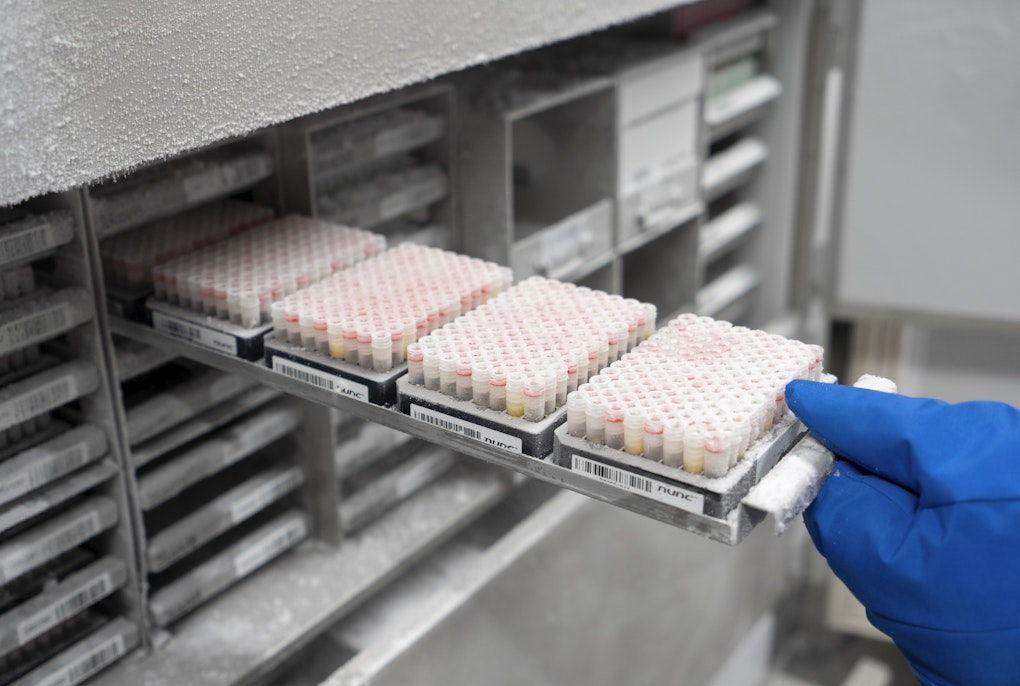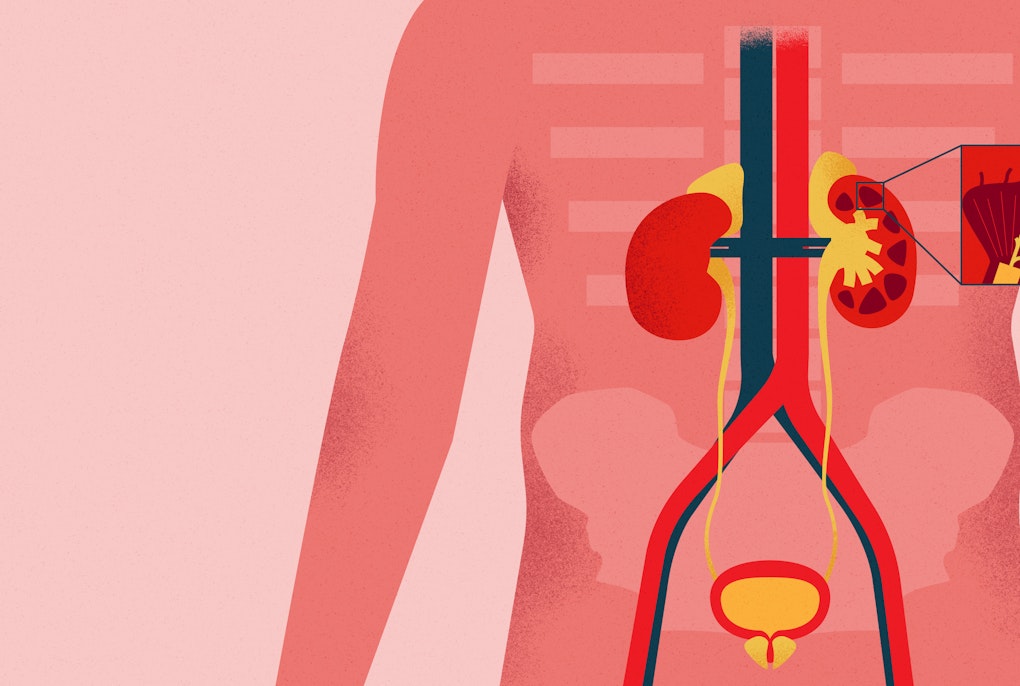Tra i vari test previsti dallo studio sulla salute CHRIS in corso in val Venosta c’è quello dell’olfatto. Sulla base dei dati di oltre 13.000 persone si possono analizzare le correlazioni tra i disturbi olfattivi, i dati genetici e alcune diagnosi.
© Eurac Research | Tiberio Sorvillo
magazine_ Interview
Sense of smell as an early warning system for Parkinson's and Alzheimer's disease.
Interview with neuroscientist Johannes Frasnelli
Neuroscientist Johannes Frasnelli, visiting professor at the Institute of Biomedicine, studies the connections between the brain and sense of smell. Here he explains how olfactory dysfunction could help in the early detection of neurodegenerative diseases, how scents often allow us to travel through time, and why data from the CHRIS population study is a real “treasure trove” for his research.
What happens in our brains when we smell something? Johannes Frasnelli: With each breath, odor molecules enter our nose, make contact with the olfactory receptors in the upper part of the nose and modify them in such a way as to create an electrical signal. This signal is transmitted to the brain, where the stimulus is processed, and we become aware of it. We understand parts of this this mechanism very well̶ down to the details however, some aspects are still completely unknown.
Is the sense of smell studied as much as the other senses?
Frasnelli: Compared to sight and hearing, we actually still know relatively little about smell, although much more than we did a few decades ago. Research received a major boost in 2004, when the Nobel Prize was awarded for the discovery of how olfactory receptors work. With Covid, which presents loss of sense of smell as a specific symptom of infection, interest has increased further.
95 percent of patients with Parkinson's or Alzheimer's suffer from olfactory disorders.
Johannes Frasnelli
One of the focal points of your research on the sense of smell is the link to Alzheimer's and Parkinson's diseases. What is already known about this?
Frasnelli: In general, we associate the major neurodegenerative diseases with very specific symptoms: for Alzheimer's it is dementia, for Parkinson's it is the characteristic tremor. In both diseases, however, the sense of smell is also strongly impaired: 95 percent of patients with Parkinson's or Alzheimer's suffer from olfactory disorders. And these disorders appear 10 to 15 years before the other symptoms. This is obviously very interesting, because it opens up the possibility of early diagnosis. But the problem is that the sense of smell can be lost for many different reasons. About 20 percent of the population have problems with their sense of smell, but most of these people will not develop Alzheimer's or Parkinson's disease. That's why our research is trying to discover the specific patterns of impairment that are characteristic of these two diseases.
Are any patterns emerging?
Frasnelli: In Alzheimer's patients especially, odor recognition ̶ the ability to smell an odor and correctly identify it, seems to be impaired. Parkinson's patients also have this deficit, but their threshold of perception is higher, they can perceive odors but only when they are relatively strong. These impairment profiles now need to be studied much more thoroughly. The goal is to be able to perform olfactory tests at the GP to recognize if one is at risk of developing one of these diseases. That way we could intervene at a very early stage and try to stop or slow down the disease. That is the goal we are working toward.
What particular research opportunities do you have at the Institute for Biomedicine?
Frasnelli: The CHRIS health study data is a treasure trove. Numerous examinations, including smell tests, were performed on about 13,000 people. So, in terms of the general population, we can analyze to what extent the reduction in the ability to smell is related to the genetic profile or to certain diagnoses.
Can the connection between sense of smell and neurodegenerative diseases also provide clues to the onset or development of these diseases?
Frasnelli: In the case of Alzheimer's and Parkinson's diseases, we know what happens in the brain-that is, we know what proteins accumulate and how this leads to nerve cell death. However, we don't know what triggers the diseases and there are various theories about this. According to one theory, Parkinson's disease could even be triggered by airborne particles which enter through the nose and slowly work their way into the brain in a destructive way from there. If this were the case, sufferers would present with olfactory dysfunction relatively early as the changes would begin in the olfactory bulb and from there spread to the areas of the brain responsible for motor activity. As I said, this is a hypothesis. What is relatively certain is that pathological changes in the brain occur gradually, first in the areas of the brain related to olfaction and only later in the others. This could reinforce the theory that the culprit enters the nose from the outside.
How many smells should a healthy person be able to distinguish?
Frasnelli: We don't know. A few years ago, a scientific article reported that humans should be able to distinguish a trillion smells; following criticism of the study, the number shifted to few hundred billion, but of course no one has tested it. Indeed, this number of distinguishable smells is unimaginably high and defining a sense of smell as “normal” is in a sense, a philosophical question. Although neither you nor I have any particular problems, our olfactory worlds are certainly very different because the repertoires of our receptors are completely different.
. The part of the brain where olfactory information and emotions are processed is the same part where memories are also stored
Johannes Frasnelli
Can our sense of smell be improved?
Frasnelli: Yes, it is possible through olfactory training, at any age. We have conducted studies with top sommeliers, aspiring sommeliers, psychology students and with people who have lost their sense of smell, and in all of them we have seen that repeated sniffing leads to long-term improvement of the sense of smell. This training has an effect not only on the sense of smell, but also on the structure of the brain.
How? Frasnelli: The grey matter in the brain responsible for the sense of smell exhibits increased thickness. The brain can be trained like a muscle: for example, if you juggle, the areas in your brain that are responsible, change. The same goes for other skills. What is special about olfaction, however, is that the areas of the brain that process olfactory stimuli are also responsible for memory and emotion. So, one has to ask if it’s possible to improve emotional stability or memory through olfactory training? We have yet to find out.
Is it because of this that smells so often awaken memories?
Frasnelli: Exactly. This is the so-called “Proust effect,” named after Marcel Proust, who was transported back to his childhood by the scent of a madeleine cake dipped in a linden blossom tea. The part of the brain where olfactory information and emotions are processed is the same part where memories are also stored, which is why each of us can tell anecdotes about how a certain smell triggered a very strong emotional memory, a journey back in time, so to speak. These memories can be positive, as in the case of Proust, or negative: for example, there are cases of people who survived a car accident in which someone was burned to death who later cannot stand a barbecue because the smell of burned meat brings that traumatic experience back to mind.
What makes the “taste” of an apple and a pineapple different are in fact the different olfactory molecules that go up into the nose that we perceive with our sense of smell. If we have a cold, the exchanges between the oral and nasal cavities are much reduced and suddenly everything tastes the same.
Johannes Frasnelli
You have devoted an entire book to the “undervalued” sense of smell, what do you mean by this?
Frasnelli: Given the choice to give up one of their senses, most people choose smell. This is partly justified, because obviously smell is not as relevant to us humans as sight and hearing. We communicate through language and gestures, we look at each other, we listen to each other, we don't smell each other. One can fall in love without ever having smelled the other person, it is entirely possible. However, the sense of smell plays a more important role than we think, and so much happens unconsciously: when we are at home, for example, the smell is that of home, we don't even notice it, but when we are at someone else's home the smell is different, and we no longer feel at home. An important aspect and another example of how we underestimate the sense of smell, is taste: what we call taste in colloquial language is an interaction of different sensory systems in which the sense of smell plays the most important role. Scents can also enter nose through the nasopharynx, which is the upper part of the throat situated behind the nose. With the tongue we can distinguish only five tastes: sweet, sour, salty, bitter and umami. What makes the “taste” of an apple and a pineapple different are in fact the different olfactory molecules that go up into the nose that we perceive with our sense of smell. If we have a cold, the exchanges between the oral and nasal cavities are much reduced and suddenly everything tastes the same, like cardboard. If the sense of smell is impaired, eating and drinking is no longer much fun.
What is the importance of the sense of smell in relationships?
Frasnelli: Humans interact with each other, often unconsciously, through odors we emit through our sweat glands. Body odor plays an important role in attraction between partners. But this is not comparable to the communication that takes place through messenger substances called pheromones. In the rest of the animal kingdom, an odor triggers a reaction in another individual of the same species, like pressing a button. There are many types of pheromones in animals: that pertain to different things, territory and alarm amongst others. In humans, when people tend to talk about pheromones, they are always talking about one thing, sexual attraction. However, in humans there are no known pheromones that actually act as pheromones, that is, that trigger a certain behavior: we are simply too complicated for that: person A may find person X's body odor pleasant, while person B might be revolted by X's odor.
In German people say, “I can't stand that person's smell,” if you can’t bear someone. Does that mean there is some truth in this saying?
Frasnelli: Absolutely. But, how exactly it works is not entirely clear, nor is it clear what comes first: do you find a person unpleasant because of his or her smell, or is someone simply such an unpleasant person that just sniffing them is enough to make your bile rise?
Johannes Frasnelli
Johannes Frasnelli, born in Lucerne and raised in Lagundo, is a neuroscientist and professor of anatomy at the University of Quebec. He studies the sense of smell and its overall effect on the human brain. On Feb. 14, 2023, he will give a lecture in German for high schools in the Eurac Research auditorium on the topic, “Du riechst so gut – ich kann dich nicht riechen. Gibt es Pheromone beim Menschen?“. Do pheromones exist in humans?" In his award-winning book “ Wir riechen besser als wir denken” he describes how the sense of smell works in a way that everyone can understand and what influence it has on our emotions and behavior as well as the latest research implications have to do with our daily lives.
